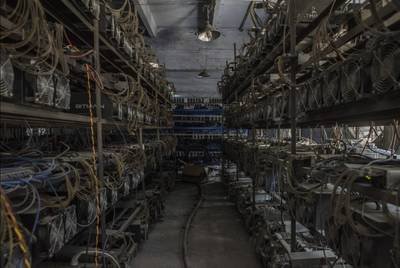Dutch Cryptocurrency Mining: Kaspa Miners, Hosting, and Profitability Analysis
In the rapidly evolving landscape of cryptocurrency, the Netherlands has carved out a niche as a burgeoning hub for mining operations, blending sophisticated technology with favorable regulatory conditions. Among the newcomers captivating attention is Kaspa, a mining algorithm gaining traction due to its innovative blockDAG (Directed Acyclic Graph) structure that promises higher throughput and scalability compared to traditional blockchain systems. Kaspa miners—specialized mining rigs designed to optimize hashing power for the Kaspa network—have started to infiltrate Dutch mining farms, offering fresh opportunities for both hardware sellers and hosting providers eager to capitalize on this trend.
Unlike Bitcoin’s SHA-256 algorithm or Ethereum’s previous Ethash (now transitioning to proof-of-stake), Kaspa’s unique approach requires tailored mining equipment that can efficiently process its blockDAG mechanism. This specificity pushes enthusiasts and investors to seek out mining rigs developed explicitly for Kaspa. Companies dealing in mining machines must enhance their product offerings, incorporating cutting-edge ASICs or GPUs finely tuned to this new protocol. The performance metrics of these miners have sparked intense interest — higher hash rates combined with energy-efficient architectures translate directly to improved profitability, especially in regions like the Netherlands where electricity costs and carbon footprint considerations weigh heavily on operational costs.

Mining farm hosting services have similarly evolved in response to this growing ecosystem. Dutch hosting companies, often located near renewable energy sources such as wind or solar farms, provide an enticing proposition for Kaspa miners. Hosting lowers entry barriers for individual miners who might otherwise encounter difficulties managing the logistics, cooling, and maintenance of hardware. By leveraging advanced data centers with lockdown-grade security and real-time monitoring, hosting providers offer turnkey solutions that balance operational efficiency and extra layers of security — vital for protecting diminishing profit margins amidst the cryptocurrency market’s volatility.
This infrastructure aligns well with the Dutch commitment to sustainability, setting a precedent for eco-friendly mining. Hosting providers are increasingly promoting green credentials alongside performance stats, meeting the rising demand from environmentally conscious investors. The juxtaposition of mining profitability and carbon impact has made the sustainability dimension an indispensable part of the conversation around crypto mining in the Netherlands.
Beyond the raw machinery and hosting, analyzing profitability for Kaspa miners in the Dutch market necessitates nuanced consideration of multiple dynamic variables. Cryptocurrency prices, inherently volatile, play the most significant role—Kaspa’s token valuation swings can amplify or erode returns rapidly, thus driving the need for miners to stay agile. Electricity rates, cooling solutions, hardware depreciation, and network difficulty adjustments intertwine, creating a complex profit equation. Market trends suggest that, although Bitcoin miners in the Netherlands have enjoyed somewhat stable returns due to the currency’s established market depth, Kaspa miners are navigating a more volatile terrain as the ecosystem matures.
Moreover, the Dutch regulatory environment contributes another layer of complexity. While tax incentives and progressive policies encourage crypto innovation, compliance obligations and energy use regulations compel mining operations to fine-tune their strategies continually. Hosting services, in particular, help miners mitigate regulatory risks, offering professional management that aligns with legal frameworks and environmental standards.

For cryptocurrency exchanges and investors, the rise of Kaspa and its mining community signals an evolution in decentralized finance perspectives. Exchanges are expanding their token listings beyond the usual suspects—Bitcoin (BTC), Ethereum (ETH), and Dogecoin (DOG)—to include emergent tokens like Kaspa’s, driven by mining community momentum and innovative consensus mechanisms. This diversification broadens investment portfolios, but it also demands heightened attention to tokenomics, mining incentives, and network health indicators.
In concert with exchanges, the interplay between miners and mining rig manufacturers is more symbiotic than ever. Products evolve in response to what the network demands and what miners can afford, creating a continuous feedback loop of innovation and market adaptation. Notably, the Dutch market’s affinity for technological sophistication accelerates this cycle, pushing manufacturers to integrate advanced cooling systems, modular designs, and remote management capabilities into their rigs.
Lastly, the mining panorama in the Netherlands and beyond is increasingly influenced by decentralized governance models and community-driven initiatives. Kaspa’s network, built on blockDAG, exemplifies this trend by attempting to reconcile scalability and decentralization—cornerstones of sustainable crypto ecosystems. As miners take on more active roles in network validation and voting, their perspective on profitability widens beyond mere token rewards to encompass long-term sustainability and protocol stability.
In summary, Dutch cryptocurrency mining, particularly around Kaspa, stands at the confluence of innovation, sustainability, and strategic hosting. The synergy between specialized miners, eco-conscious hosting services, and intricate profitability analyses reflects a microcosm of the global crypto mining industry’s trajectory. For companies in the mining machine market, grasping the nuances of emerging tokens like Kaspa, coupled with the regulatory and environmental context of the Netherlands, is pivotal to thriving amid this exciting, ever-shifting digital frontier.
One Response
This article dives into the Dutch crypto mining landscape, spotlighting Kaspa miners’ unique performance, innovative hosting solutions, and nuanced profitability factors, offering a multifaceted view that challenges conventional wisdom and uncovers hidden opportunities.